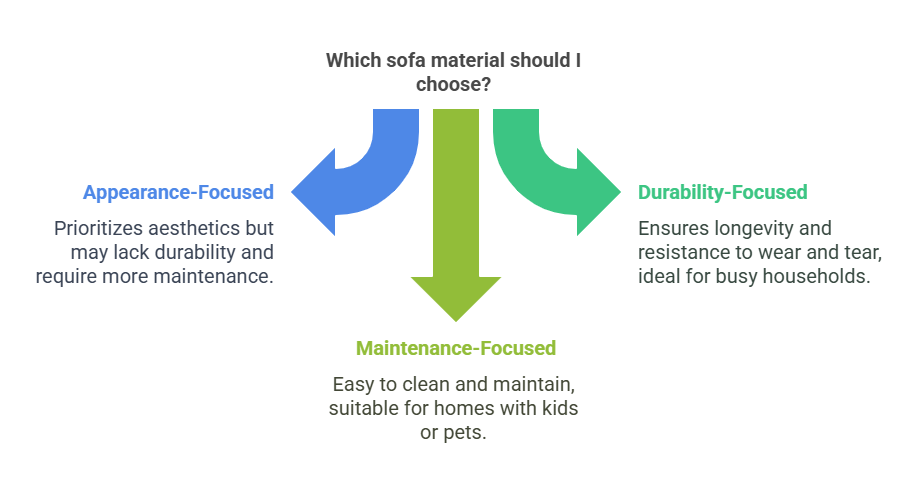Buying a sofa is a significant investment for any home. It’s not just about comfort—it’s also about functionality, style, and long-term value. However, many people make avoidable mistakes during the process, which can lead to regrets later.
To help you make a smarter decision, here are five common sofa-buying mistakes and how you can avoid them. Sofas are more than just furniture; they’re the heart of a living room and deserve careful consideration.
1. Ignoring the Size and Scale of the Sofa
One of the most frequent mistakes buyers make is purchasing a sofa that doesn’t fit the space. A sofa that’s too large can make a room feel cramped, while one that’s too small may look awkward and fail to provide enough seating.
How to Avoid It:
Before you start shopping, measure your space carefully. Take into account the dimensions of the room, including doorways, hallways, and any obstacles like radiators or shelves. Use painter’s tape to outline the sofa’s footprint on the floor. This simple step will give you a better sense of how the sofa will fit into your living area.
2. Prioritizing Style Over Comfort
A sleek, stylish sofa might look great in your living room, but if it’s uncomfortable, you’ll soon regret the purchase. Many buyers get drawn in by trendy designs and neglect to test their comfort level, leading to dissatisfaction down the line.
How to Avoid It:
Strike a balance between style and comfort. When testing sofas, sit in them for a few minutes to gauge support and cushioning. Pay attention to seat depth, back support, and cushion firmness. Remember, a sofa should suit your daily needs—whether you’re watching movies, reading, or entertaining guests.
3. Overlooking Material and Fabric Choices
The sofa’s material is crucial, especially if you have kids, pets, or a busy household. Many buyers choose fabrics based solely on appearance without considering durability or maintenance requirements. This can result in stains, tears, and faster wear and tear.
How to Avoid It:
Think about your lifestyle when selecting fabric. For homes with pets or children, opt for stain-resistant, durable materials like microfiber or performance fabric. Leather is also a great option as it’s easy to clean and ages well. If you’re unsure, ask for fabric samples to test how they hold up to spills and everyday use.
4. Neglecting the Sofa’s Frame and Construction
A sofa might look sturdy on the surface, but if the frame and construction are poor, it won’t last. Many buyers focus on external appearance without considering the internal structure, leading to sagging cushions, squeaky joints, and broken frames after a few years.
How to Avoid It:
Check the materials used in the frame. Kiln-dried hardwood is a durable choice, while softwoods like pine are more prone to warping. Look for sofas with reinforced joints, such as dowels, screws, and corner blocks, rather than just glue or staples. Don’t forget to test the springs—high-quality sofas typically use eight-way hand-tied springs for better support and durability.
5. Forgetting to Assess Practical Features
Sometimes, buyers choose a sofa based on its aesthetics without considering practical aspects like functionality, maintenance, and long-term usability. For instance, a light-coloured fabric might look stunning but could be impractical for a high-traffic living area.
How to Avoid It:
Think beyond the sofa’s appearance. Consider features like removable, washable covers for easy maintenance or modular designs if you plan to move or reconfigure your space in the future. If you’re short on space, look into sofa beds or designs with hidden storage.
Conclusion
Choosing the right sofa requires a balance of style, comfort, and practicality. By avoiding these common mistakes, you’ll invest in a piece of furniture that not only enhances your living space but also stands the test of time. Remember to measure your space, test for comfort, choose the right material, check for solid construction, and think about practical features. With a little planning and consideration, you can find the perfect sofa to enjoy for years to come.








































